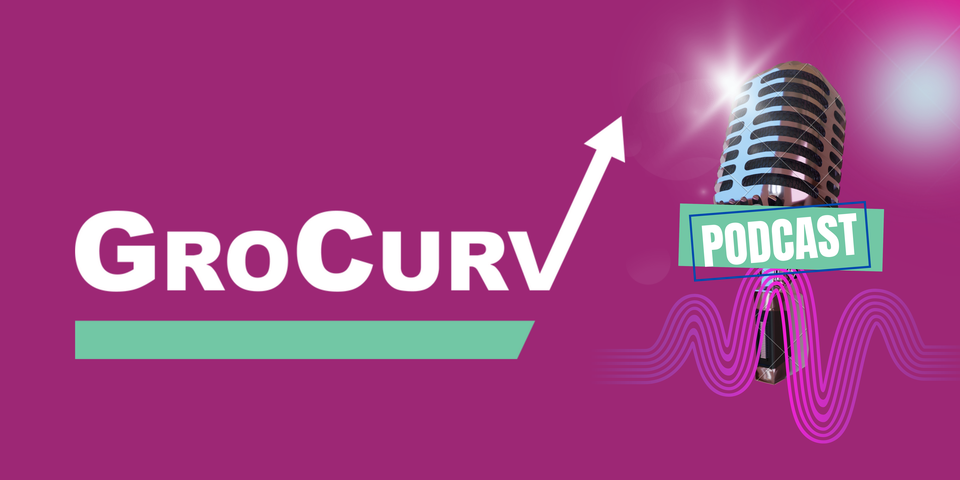How young brands grow: Finding the right Target Market

Welcome to GroCurv’s podcast on customer acquisition, called Right On Track. The discipline of focusing on the few things that matter. You can find the link to the podcast here:
As a marketplace for marketing services, GC enables young and fast growing brands to meet and work with the right agency partners.
In this series, we share learnings from hundreds of brands that have used GroCurv.com and its partner agencies to grow fast, profitably. Allowing you all to learn lessons on how to make the most of your marketing investment.
This week we address the concept of Target Market:

The most fundamental truth for a brand is that it rarely appeals to everyone.
If I am Nike, I appeal to performance runners.
If I am BMW, I appeal to the high performance car enthusiasts.
If I am Levi’s, I appeal to a casual wear audience that enjoys stylish denims.
Most brands, start out trying to solve a large problem. That’s a very simplistic starting point.
The idea for brands is to find a passionate market segment that likes to buy their product at the price being suggested; then if this market is large enough, the business grows. Or not.
The first part of the statement is very important: are there people who like to pay for what is being offered? This is the target market you are looking for.
The second, are these people sufficient to create a large business? This question can be seen in two ways.
- Is there a large enough use case that can be created? Eg- UBER. People take rides all the time. Can they shift from owned vehicles to hired ones? We have seen over time this trend rising on the back of promotions/ driver incentives etc. Its expensive, Uber is not profitable, but there were investors who put in billions of dollars to create a new consumer habit. These are category building innovations.
In the absence of VC investments, categories are built organically. Like- Nike/ Or Colgate or Parle G- all of these brands took years to build the business as their marketing spends and costs could not be wildly away from sales (revenues).
- Or, there is a large enough user base that uses a variation of your product and sees the value of your innovation over competition. In which case, they switch from competition rapidly. Example- Consumers who moved from Colgate to Pepsodent. Or from ordinary shaving systems to Gilette.
In todays; world, with capital being more freely available, brands have the option of creating categories if their innovations are unique enough. But whether the money is generated from the business or externally funded, making this capital useful and productive is still an important challenge.
So how does one define the target market?

For a young brand, customer acquisition is job#1, and where a lot of the commercial resources and time of the leadership team is spent. For a brand to maximise its marketing ROI, it is critical to define the target market well, often with as many descriptors as possible.
A target audience can be described by a large number of descriptors: Age/ sex/ income/ education/ location/ interests etc. But the more variables are known for a consumer, the tighter and more valuable is the target market.
Eg: For example a Target Market that is defined on the basis of
Age& Sex & Location & Income & Interest & Behaviors & Education & Social Status is likely to give you a far more precise audience that simple Age & Sex. Or Age & Sex & Location.
Often our Target definition is constrained by how much we know about the audience we are looking to target, and this is a failure of the marketing process of the brand. The more we know about tour audience, the higher the marketing ROI.
Yes, it may seem that we are restricting the number of people exposed to our product, but seen another way we are “maximizing the number of people who will purchase our product”. And business is made not on impressions, but on purchases.
Target Market and Target Audience:

At this point, we will digress to introduce another term called Target Audience. The target audience is a subset of your target market. But is related to specific advertising campaigns.
For example: The Uber ad which targets the safety of women, in order to promote Uber’s safety promise. While the TG for Uber would have included males and females, this advertisement has the woman as its target audience. Another advertisement could be targeted at Men. Usually an advertisement is more specific in its audience, compared to the brand’s target market. If you do hear your marketing agency speak of target market and target audience, now you know the difference.
The other point of interest is that sometimes the target market and audience could be quite different. Eg: Perfumes for males are often bought by women, so the target audience of the advertisement is very different from the target market for the product.
So now, how do you define your target market in a useful manner?
Some well known ways are:
- Meet buyers of your product ( if its an existing category); else potential buyers of your product.
- Ensure you have a large enough sample , and if you can take the help of a “research agency”, you would be sure you’re getting the right information, without any biases.
- Use your existing buyer data and break it down into as much detail as possible. For example, you may actually realise yours is a purchase that happens on weekdays at 6 pm and at specific metro stations close to offices- typically as people leave from work. That’s a very specific and powerful starting place for your understanding of your market.
As the world spends more time online, one element of understanding your target market is also their online behavior.
Media habits and Social media understanding is an important aspect about your target market that you should make efforts to know. Who do they follow? What influencers do they trust? Which websites do they visit? Where do they shop?
Buy knowing this about your target market, you know how to create the right advertising messages, and show them in the right media ( and at the right time). Eg: B2B buyers are seldom looking for product information on the weekends, but get very active in the weekday.
The right target market then becomes a powerful ally. Not only are they easy to convert to sales, but they also tend to become product advocates, bringing in more people to your brand; thereby lowering your cost of acquisition.
To conclude, we would add one more aspect of your target market definition:
Keep evaluating:
Your users: Are they using more; are they happy? Are they shifting to competition. Are they strong recommenders?
If not, Why not?
Your non users: Consumers that you think should be using, but don’t: Why do they use the competition? What keeps them there? Are there any gaps in the competition product or service that you can exploit?
The consumer landscape is an evolving one. Especially given that product innovation is all around us now; new offerings to the consumer can shift them away from their brand of choice.
While keeping the consumer at the center of the business is a well known strategy, our experience has been to start with the narrowest definition of this consumer in order to set up your business with a strong foundation.
To know more about target market and how to use it for your young brand, visit us on www.grocurv.com.
We will be back soon with another episode on customer acquisition, in the meanwhile stay focused, stay Right On Track.
